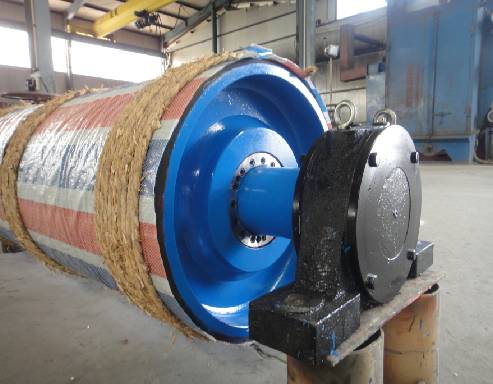 Afrikaans
Afrikaans  Albanian
Albanian  Amharic
Amharic  Arabic
Arabic  Armenian
Armenian  Azerbaijani
Azerbaijani  Basque
Basque  Belarusian
Belarusian  Bengali
Bengali  Bosnian
Bosnian  Bulgarian
Bulgarian  Catalan
Catalan  Cebuano
Cebuano  Corsican
Corsican  Croatian
Croatian  Czech
Czech  Danish
Danish  Dutch
Dutch  English
English  Esperanto
Esperanto  Estonian
Estonian  Finnish
Finnish  French
French  Frisian
Frisian  Galician
Galician  Georgian
Georgian  German
German  Greek
Greek  Gujarati
Gujarati  Haitian Creole
Haitian Creole  hausa
hausa  hawaiian
hawaiian  Hebrew
Hebrew  Hindi
Hindi  Miao
Miao  Hungarian
Hungarian  Icelandic
Icelandic  igbo
igbo  Indonesian
Indonesian  irish
irish  Italian
Italian  Japanese
Japanese  Javanese
Javanese  Kannada
Kannada  kazakh
kazakh  Khmer
Khmer  Rwandese
Rwandese  Korean
Korean  Kurdish
Kurdish  Kyrgyz
Kyrgyz  Lao
Lao  Latin
Latin  Latvian
Latvian  Lithuanian
Lithuanian  Luxembourgish
Luxembourgish  Macedonian
Macedonian  Malgashi
Malgashi  Malay
Malay  Malayalam
Malayalam  Maltese
Maltese  Maori
Maori  Marathi
Marathi  Mongolian
Mongolian  Myanmar
Myanmar  Nepali
Nepali  Norwegian
Norwegian  Norwegian
Norwegian  Occitan
Occitan  Pashto
Pashto  Persian
Persian  Polish
Polish  Portuguese
Portuguese  Punjabi
Punjabi  Romanian
Romanian  Russian
Russian  Samoan
Samoan  Scottish Gaelic
Scottish Gaelic  Serbian
Serbian  Sesotho
Sesotho  Shona
Shona  Sindhi
Sindhi  Sinhala
Sinhala  Slovak
Slovak  Slovenian
Slovenian  Somali
Somali  Spanish
Spanish  Sundanese
Sundanese  Swahili
Swahili  Swedish
Swedish  Tagalog
Tagalog  Tajik
Tajik  Tamil
Tamil  Tatar
Tatar  Telugu
Telugu  Thai
Thai  Turkish
Turkish  Turkmen
Turkmen  Ukrainian
Ukrainian  Urdu
Urdu  Uighur
Uighur  Uzbek
Uzbek  Vietnamese
Vietnamese  Welsh
Welsh  Bantu
Bantu  Yiddish
Yiddish  Yoruba
Yoruba  Zulu
Zulu different types of conveyor rollers
Different Types of Conveyor Rollers
Conveyor systems are integral to modern manufacturing and logistics operations, enabling the efficient movement of materials across various settings. One of the key components of these systems is conveyor rollers, which facilitate the transportation of goods. Understanding the different types of conveyor rollers is essential for optimizing performance and ensuring the longevity of the conveyor system.
1. Gravity Rollers These are the simplest type of conveyor rollers, relying on gravity to move items down an incline. Gravity roller conveyors are cost-effective and efficient for transporting lightweight goods. They are commonly used in warehouses and shipping facilities where items need to move from a higher elevation to a lower one. The spacing of the rollers can be adjusted based on the weight and size of the products being moved.
2. Powered Rollers Unlike gravity rollers, powered rollers use an electric motor to drive the movement of items. These rollers can move goods horizontally or at an incline, making them ideal for more complex conveyor layouts. Powered roller systems are often used in assembly lines and automated packaging operations, where precise control of the movement is crucial.
different types of conveyor rollers

3. Adjustable Rollers These versatile rollers feature mechanisms that allow the angle and height to be adjusted according to the requirements of the operation. Adjustable rollers are beneficial in dynamic environments where the type of product being transported may change frequently. This adaptability helps maintain efficiency without the need for complete system overhauls.
4. Specialized Rollers For specific applications, specialized rollers are designed to cater to unique materials or environments. For example, rubber-coated rollers provide additional grip for transporting slippery items, while stainless steel rollers are ideal for environments requiring sanitation, such as food processing plants. Additionally, anti-static rollers are designed for electronics manufacturing to reduce the risk of static damage.
5. Roller Materials Conveyor rollers can be made from various materials, including metal, plastic, and rubber. The choice of material affects durability, weight capacity, and cost. Metal rollers are typically used for heavy-duty applications, while plastic rollers are suitable for lighter loads and environments where corrosion is a concern.
In conclusion, understanding the different types of conveyor rollers can help businesses select the right components for their conveyor systems, enhancing efficiency and minimizing downtime. By considering factors such as load type, environmental conditions, and roller material, companies can invest in solutions that improve productivity and ensure smooth operations.
-
Wing Pulley Conveyor for Conveyor Belt MaintenanceNewsJun.16,2025
-
Self Cleaning Spiral Idler for Conveyor DesignNewsJun.16,2025
-
Pulley Lagging for Conveyor Belt AlignmentNewsJun.16,2025
-
Impact Idlers Used in Belt Conveyor for PerformanceNewsJun.16,2025
-
Ceramic Lagging Conveyor Pulley for Conveyor Belt SystemsNewsJun.16,2025
-
Belt Conveyor Idler for Heavy-Duty ApplicationsNewsJun.16,2025





























